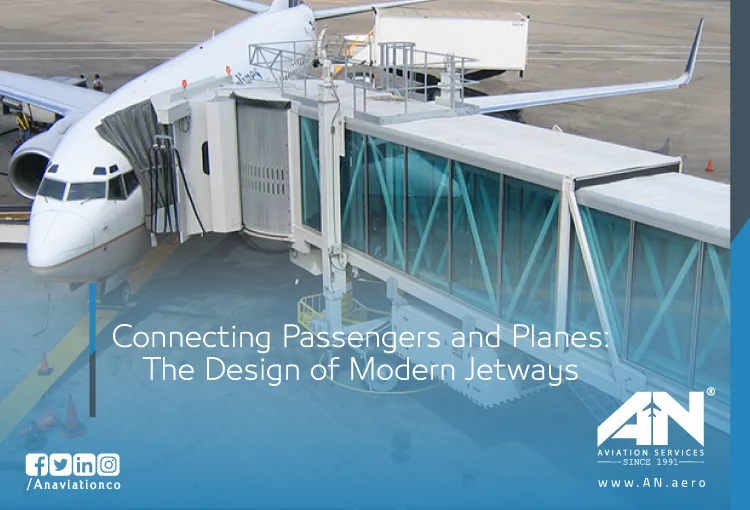
Jetways are one of the most essential yet often overlooked components of air travel. These movable walkways, also known as passenger boarding bridges, seamlessly connect airport terminals to aircraft, ensuring a smooth and safe transition for passengers boarding or disembarking a plane. While jetways may seem simple in function, their design, operation, and importance in aviation logistics are far more intricate than they appear.
In this blog, we’ll take a closer look at the evolution of jetways, their significance in the passenger experience, and the innovative designs shaping the future of airport connectivity.
What is a Jetway?
A jetway, or passenger boarding bridge (PBB), is a covered, movable tunnel that connects an airport terminal to an aircraft door. Its primary function is to create a safe and weather-protected passageway for passengers and crew to enter and exit the plane. Jetways are an integral part of airport operations, providing convenience, safety, and efficiency in the complex environment of air travel.
Modern jetways are equipped with advanced technology to cater to a variety of aircraft types, from smaller regional planes to wide-body commercial airliners. These bridges are designed to be adjustable, aligning with the varying heights and door configurations of aircraft.
The Evolution of Jetways
Before the introduction of jetways, passengers often had to walk across the tarmac and climb stairs to board their planes, leaving them exposed to the elements. This method was not only inconvenient but also presented safety risks, especially in inclement weather or busy ramp environments. The advent of jetways revolutionized air travel by eliminating these concerns.
The first jetway was introduced in the late 1950s, coinciding with the rapid expansion of commercial aviation. As aircraft became larger and airports busier, the need for efficient boarding and deboarding solutions grew. Over the decades, jetways have evolved in design and functionality, incorporating features like air conditioning, lighting, and safety mechanisms to improve the passenger experience.
Design Features of Modern Jetways
The design of a jetway reflects a balance between functionality, safety, and passenger comfort. Some of the key features of modern jetways include:
- Adjustable Configuration: Jetways are built to accommodate different aircraft sizes and door heights. They can extend or retract, tilt, and swivel to align perfectly with the aircraft door.
- Weather Protection: By enclosing passengers in a covered walkway, jetways protect against rain, wind, and extreme temperatures, ensuring a comfortable boarding process.
- Passenger Accessibility: Modern jetways are designed to meet accessibility standards, allowing passengers with reduced mobility to board planes seamlessly. Features like gentle slopes and wide pathways ensure compliance with international accessibility guidelines.
- Safety Mechanisms: Jetways are equipped with sensors and controls to prevent damage to the aircraft during alignment. Additionally, they include emergency stop systems to address any operational errors quickly.
- Sustainability Features: Many jetways now include eco-friendly materials and energy-efficient systems, reflecting the aviation industry’s commitment to sustainability.
The Role of Jetways in Passenger Experience
Jetways play a vital role in shaping the overall passenger experience. By eliminating the need for outdoor boarding, they provide a level of comfort and convenience that enhances air travel. Passengers are no longer subject to weather conditions, and families with children, elderly travelers, or those with disabilities benefit from the ease of moving directly from the terminal to the plane.
Moreover, jetways contribute to faster turnaround times for airlines. Quick and efficient boarding and deboarding reduce delays, which are critical in maintaining tight flight schedules and operational efficiency.
Innovations in Jetway Design
The aviation industry is continuously exploring new ways to improve jetway technology. Some of the latest innovations include:
Automated Jetways:
Using advanced sensors and AI, automated jetways can dock with an aircraft more quickly and accurately than manual systems, reducing the risk of alignment errors.
Dual Jetways for Larger Aircraft:
To accommodate wide-body planes like the Airbus A380 or Boeing 747, some airports use dual jetways—one for the upper deck and another for the lower deck. This system expedites boarding and deboarding for larger passenger loads.
Smart Features:
Jetways equipped with real-time data sensors can communicate with air traffic control and ground operations, providing updates onboarding progress and helping streamline airport operations.
Sustainability Improvements:
Jetways with solar panels, LED lighting, and energy-efficient air conditioning systems are becoming more common, contributing to the aviation sector’s environmental goals.
Enhanced Passenger Comfort:
Some jetways now include features like panoramic windows, softer lighting, and even subtle aromatherapy to create a more pleasant boarding experience.
Challenges in Jetway Operations
While jetways bring numerous benefits, they also come with challenges. One of the main concerns is maintenance and operational reliability. A malfunctioning jetway can lead to boarding delays and passenger frustration. Airports must invest in regular maintenance and training for ground personnel to ensure smooth operations.
Additionally, not all airports are equipped with jetways, particularly smaller or regional airports. In such cases, passengers may still need to use mobile stairs or walk across the tarmac, which may not provide the same level of comfort and convenience.
The Future of Jetways
As airports and airlines continue to modernize, jetways will remain a critical component of aviation infrastructure. The integration of smart technologies and sustainable practices will redefine jetway design, making them more efficient, reliable, and passenger-friendly.
Furthermore, as the aviation industry moves toward accommodating new aircraft designs, such as electric or hydrogen-powered planes, jetways will likely evolve to meet these unique requirements. Their ability to adapt to changing technologies ensures they will continue to play an essential role in air travel.
Conclusion
Jetways are more than just a bridge between the terminal and the aircraft—they represent the intersection of convenience, safety, and efficiency in air travel. From their humble beginnings to the advanced, tech-driven systems of today, jetways have significantly improved the passenger experience while streamlining airport operations.
As the aviation industry embraces innovation, jetways will undoubtedly evolve further, providing an even more seamless and enjoyable journey for travelers worldwide.

